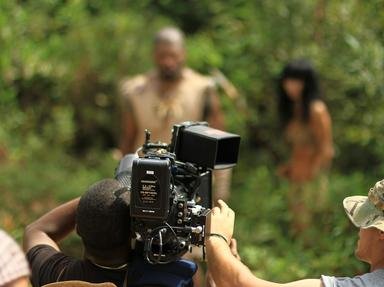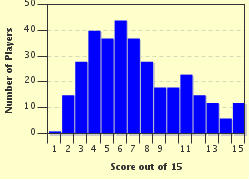Quiz Answer Key and Fun Facts
1. "The Cisco Kid" (1950):
Duncan Renaldo starred in the title role on this Western series, that was very popular among young viewers. What distinctive "first" did the series mark in television broadcast history?
2. "The Adventures of Superman" (1952):
George Reeves starred in the title role as the "Man of Steel". Missing the first season, which performer did not play the role of their character for the entire run of the series?
3. "Sergeant Preston of the Yukon" (1955):
Dick Simmons starred in the title role of the courageous Mountie who patrolled and brought law and order to the Yukon Territory. Sgt. Preston was always aided by one, and sometimes two, non human companions. What were their names?
4. "Beulah" (1950):
During the three seasons of this ground breaking sitcom series, three different actresses portrayed the title character. Which actress did NOT, at some point, star in the title role?
5. 1950s Western series:
In which popular series did Guy Madison star in the title role?
6. "The Lone Ranger" (1949):
Clayton Moore played in the title role of the famed masked man in 169 of the 221 episodes of this classic Western series. In Moore's absence, who played the role in the remaining 52 episodes?
7. "Casey Jones" (1958):
Alan Hale, Jr. played the title character as the legendary railroad train engineer behind the throttle of the "Cannonball Express". What was the engine number of his locomotive?
8. "The Adventures of Rin-Tin-Tin" (1954):
The title character of this action series was a German Shepherd dog, owned by a young boy being raised on a frontier military outpost. Which army Calvary detachment were the boy and his dog assigned?
9. "Sky King" (1951):
The program started with a voice announcing, "Out of the blue of the Western sky comes - Sky King". Who played the title role?
10. "Circus Boy" (1956):
The title character, Corky, was being raised by Joey the Clown and the performers of the Burke and Walsh Circus. Which blond haired young actor played the title role?
11. "The Amos 'n' Andy Show" (1951):
This series made the successful transition from popular radio series to television series. Alvin Childress played one of the title characters. What was his occupation?
12. "Topper" (1953):
Leo G. Carroll played the title character in this classic fantasy sitcom. What was Topper's occupation?
13. "The Life of Riley" (1949 & 1953):
William Bendix may be best remembered as the title character in the long running 1953 series. Four years prior, another actor played the title character in a one season version of the series. In the 1949 series, who played the role of Chester A. Riley?
14. "The Millionaire" (1955):
What was the full name of the main character?
15. "Perry Mason" (1957):
Raymond Burr may forever be remembered for his portrayal as legendary defense attorney Perry Mason. Over the nine season run of the series, Perry Mason handled nearly 600 trial cases and maintained an impressive record. In total, how many times was Perry Mason on the losing side of a verdict?
Source: Author
MaceoMack
This quiz was reviewed by FunTrivia editor
Gamemaster1967 before going online.
Any errors found in FunTrivia content are routinely corrected through our feedback system.

